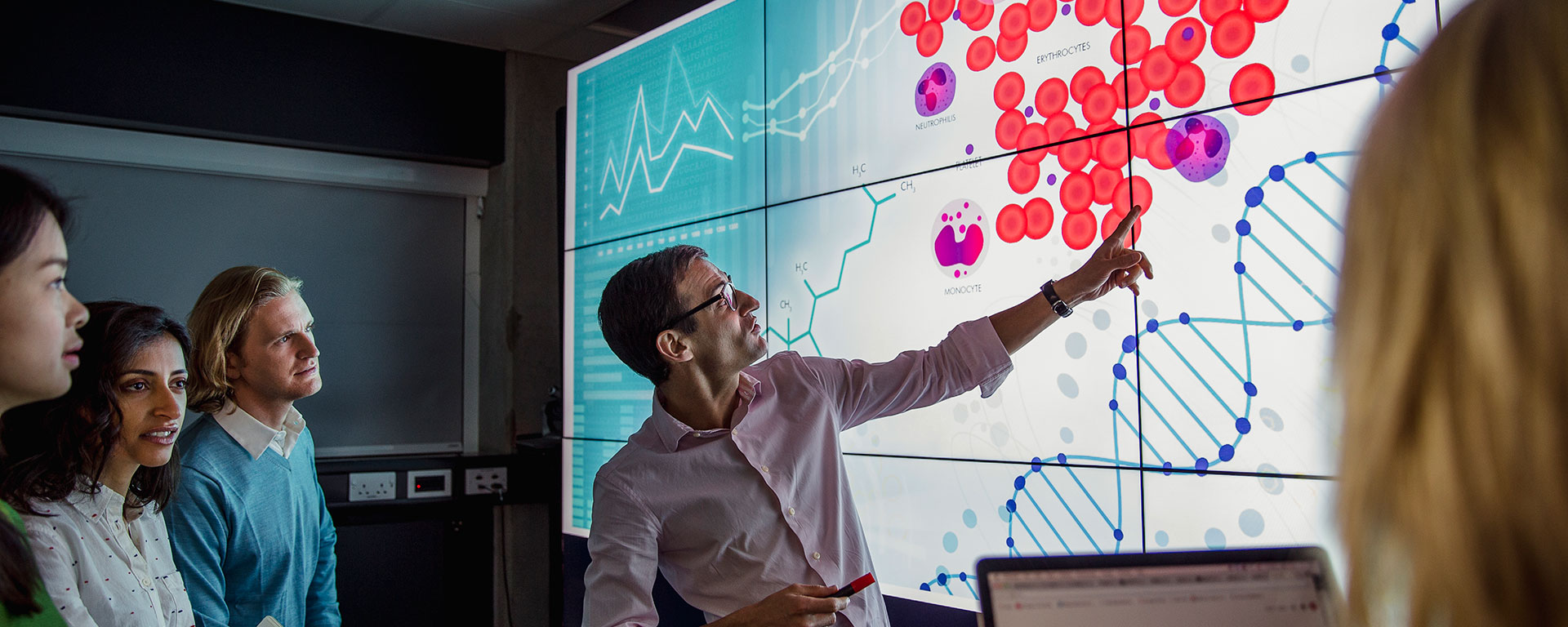Bioinformatics Tutor for Dummies
Table of ContentsBioinformatics Tutor Things To Know Before You Buy4 Easy Facts About Bioinformatics Tutor ExplainedLittle Known Questions About Bioinformatics Tutor.How Bioinformatics Tutor can Save You Time, Stress, and Money.What Does Bioinformatics Tutor Mean?
Of the total amount individuals associated with the training, 80% were trainees from public higher education establishments, while the continuing to be 20% originated from personal institutions. To get a certificate of participation, pupils were called for to go to at the very least 90% of the total training hours. As a result of this requirement, an outstanding 95% of the participants effectively obtained their certifications, having not only fulfilled the minimum participation requirements but additionally completed all appointed tasks throughout the training.
During the elevation of the COVID-19 pandemic, particularly in between June and August 2020, the job group was charged with organizing specialized training in bioinformatics. This training was specifically focused on students from the study group Center for Research in Applied Computer at the Federal University of Pará (UFRA) The adjustment to remote learning systems due to the pandemic developed an opportunity to explore new training methodologies and digital devices that enhanced both reach and efficiency.
This program was designed to give an easily accessible yet detailed summary of Artificial Knowledge techniques, especially as applied in bioinformatics (Bioinformatics Tutor). This virtual format made it possible for engagement from pupils throughout Brazil, several of whom could not have had the possibility to attend in-person sessions.
The Facts About Bioinformatics Tutor Revealed
A remarkable feature of this program was its focus on hands-on learning. Roughly 50% of the complete training hours were dedicated to useful tasks where pupils built intelligent designs and applications in a series of scientific domains, consisting of genes, molecular biology, and ecological data analysis. Commonly made use of tools and frameworks such as Spyder, Google Colab, Jupyter Notebooks, and Orange were integrated into the coursework. These systems made it possible for pupils to participate in real-time data control, design training, and formula experimentation.
The program brought in 80 individuals in total amount. Sixty of them were associated with various higher education and learning organizations in the state of Pará, while the staying twenty originated from institutions located in 5 various other Brazilian states. This wide geographical representation highlighted the national interest in bioinformatics and the expanding need for specialized skills in this area. By introducing Expert system in a appropriate and useful context, the initiative offered to link the space between concept and real-world application, giving trainees with a strong foundation for future research study or employment in the area.
The training effort created part of a broader scholastic outreach initiative referred to as the Bioinformatics on the Roadway project. This task has, over the years, presented dozens of students to the globe of bioinformatics and computational biology. The events held under this umbrella campaign have actually taken location throughout numerous regions and years, as summed up in Table 1 (List of occasions, areas, years, and overall numbers of students and teachers)
Several of these groups, initially brought together by their participation in training events, have because gone on to create independent scientific research study in partnership with regional scholastic organizations. The training not just promoted clinical thinking within the context of bioinformatics however additionally triggered joint partnerships that expanded past the training setting.
The Basic Principles Of Bioinformatics Tutor
The job itself was conceptualized and arranged by MB and RR, who looked after the preparation and application of each action. Lectures were provided by a multidisciplinary team containing megabytes, FA, EF, KP, JS, DM, SN, LP, LG, IH, air conditioner, and rr. The exact same team, excluding IH and RR, additionally acted as tutors for the sensible training modules. Funding for the task was read this supplied with the give 88887.200562/ 2018-00 from CAPES. The authors extend their appreciation to everyone that added to the understanding of this job, whether straight or indirectly, considering that its inception.
The Federal College of Pará's Office of Study (PROPESP/UFPA) likewise gave financial backing, especially for the production of the final manuscript. The writers proclaim no economic or commercial problems of interest that can have affected the study. Additionally, all opinions and interpretations expressed in this post are only those of the authors and do not necessarily show those of their corresponding institutions, the publisher, editors, or reviewers included in the magazine procedure.

The Best Guide To Bioinformatics Tutor
From a pedagogical point of view, the teaching approach used in the training was purposefully interactive. Courses were performed go to this website in a way that encouraged student engagement and conversation, exceeding rote memorization to explore how concepts are created, used in life, and evaluated in academic setups. The training approach concentrated on nurturing both strong and battling pupils, supplying customized assistance, and structure self-confidence via continual mentorship and patience.

Each group, including around 36 individuals, was supported by 3 coaches-- a lot of whom were postdoctoral researchers with customized know-how. These coaches not only helped create the group projects yet likewise promoted their execution, guaranteeing that each research study concern was both properly challenging and pertinent. The goal was to provide a naturally practical context that participants can explore through open-ended objectives and accessibility to curated datasets.
For additional insights into the technique and end look at this website results of this project-based learning technique, viewers are guided to S1 Text, which consists of detailed summaries of the pedagogical framework, evaluation approaches, and job themes utilized in the training sessions.
10 Simple Techniques For Bioinformatics Tutor
Of the overall individuals included in the training, 80% were trainees from public higher education institutions, while the continuing to be 20% came from personal establishments. To qualify for a certification of participation, trainees were required to participate in at least 90% of the complete training hours. Notably, past the pupils who enlisted in the training sessions, seven seasoned instructors participated in providing the courses, while three specialized research study teachers collaborated the total training process. Roughly 50% of the complete training hours were dedicated to functional activities where students constructed intelligent versions and applications in a range of clinical domains, consisting of genetics, molecular biology, and ecological data analysis. The training not only cultivated clinical thinking within the context of bioinformatics yet likewise triggered collaborative partnerships that extended past the training setting.